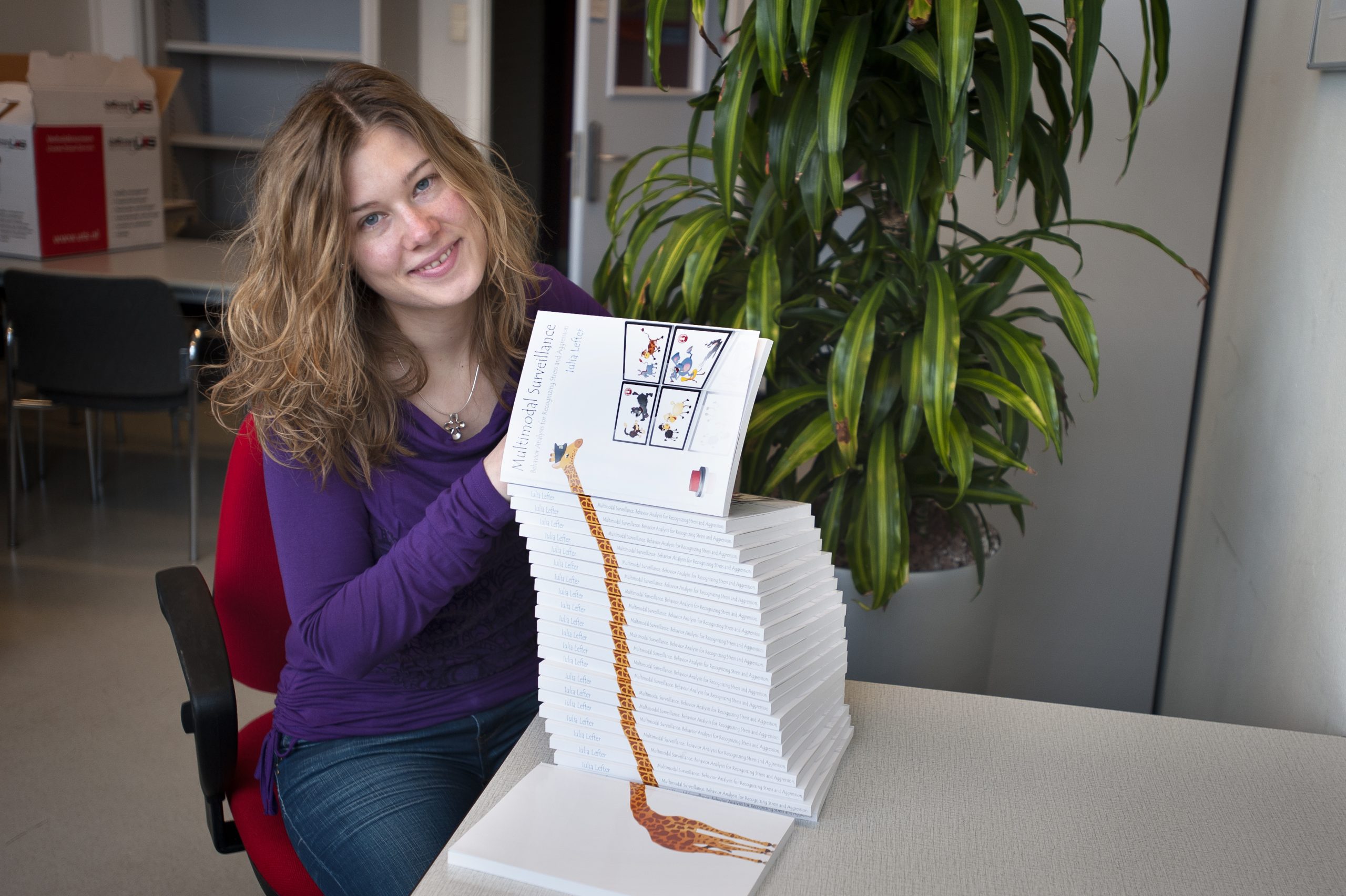A smart add-on for CCTV cameras recognizes stress and aggression. Its developer, Dr. Iulia Lefter, says it may prioritize certain cameras to surveillance operators.
Sighing, table banging, shouting and throwing things. For humans, it’s pretty clear when a situation is getting out of hand. But how do you teach a computer to read the subtleties of human, or rather, primate, conduct.
That is the subject of Lefter’s PhD research at EEMCS faculty that was supported by the Netherlands Defence Academy, TNO and TU Delft. In her PhD research, Lefter pulled together the existing knowledge on automatic conduct evaluation to make a system that not only detects aggression or unwanted behaviour, but also stress because it often precedes aggression.
“What is unique about our work”, says Lefter, “is that we created an intermediate level of understanding.” She refers to the semantic gap that exists between say the pitch and the loudness of a voice (low level information) and the message it conveys (high level). The same applies for tracing someone in a video image (low) and understanding his behaviour (high).
The current smart stress sensor agrees in about 70% of the cases with humans. Incidents that it will typically miss out on are those that start within a social context such someone putting his feet up in the train, or a mother with a baby on her arm to whom no one offers a seat. “Most people would understand why stress could evolve from that, because they know the context.” Computers obviously don’t. Yet.
The multimodal surveillance that Lefter developed could be used to prioritize screens in a CCTV surveillance room where something seems to be happening. Operators should nonetheless stay vigilant, says Lefter, because smart as it may be, the automatic surveillance is not waterproof.
delta.tudelft.nl/27938



Comments are closed.